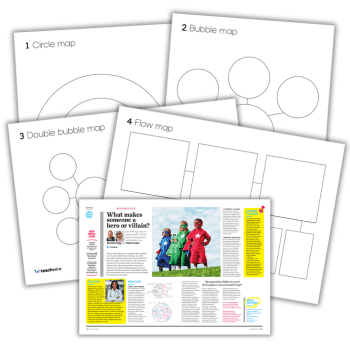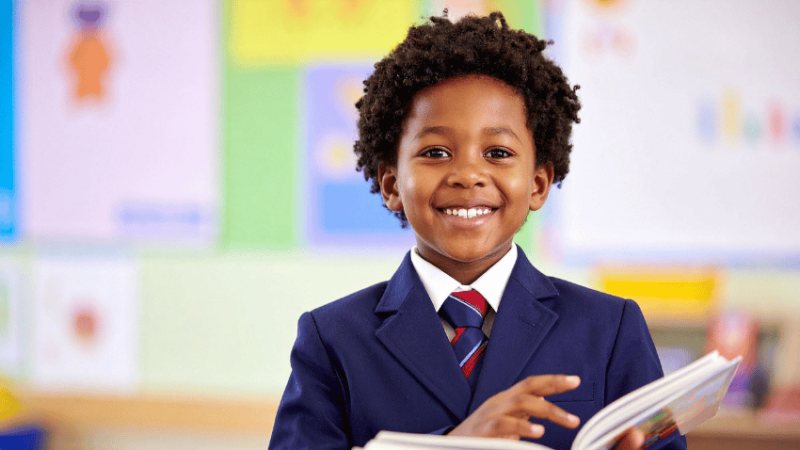‘Active listening is critical to gaining children’s trust’

Are you interested in what your children are saying? Really? Kathy Brodie explains how to give them your undivided attention, and why it matters…

- by Kathy Brodie
- Consultant, trainer, author and founder of Early Years TV Visit website

We listen to children every day, but how often do we practise active listening?
Active listening is one step further on from simply hearing the words that are being said. It is having an understanding of their deeper meaning and letting the speaker know that you have really listened to them. It is about being in that moment, wholeheartedly paying attention.
Active listening, along with positive questioning, is at the heart of effective sustained shared thinking with children. It is also a very effective technique during conflict resolution, especially with younger children. Active listening is a skill that needs to be practised, especially in a busy early years setting. Children are very quick at picking up when adults are only half listening, or have no interest in what they are saying, so active listening is critical to gaining children’s trust, as well as tuning into their interests and thinking processes. Try reflecting on the following points and adapting your practice accordingly…
1. No distractions Reduce the number of external distractions. These could include excess noise, activities going on or other children. If you are having a conversation with a child, encourage other children to wait and not interrupt. You can also discuss having a procedure with the other practitioners in your setting, who can help to minimise interruptions by engaging the other children or reducing noise levels.
If necessary, consider moving to a quieter area so you can really concentrate on the conversation.
2. Learn to focus Reduce internal distractions. Most of us have an internal monologue that we listen to, which is reminding us of what to have for tea, jobs that need doing and so on. You need to try to minimise this as much as possible during active listening and be totally with your child at that moment in time.
This will probably need to be practised, as there are always lots of things to be thinking about, and you will be naturally alert to your surroundings in case of emergencies.
3. Eye contact Good eye contact shows you are ready to listen and that your child has your full attention. You can initially get eye contact by using the children’s names at the beginning of a sentence, as most children will turn to look when they hear their own name.
Do be aware that this may not be suitable for every child, and that there is a fine line between staring, which can be very off-putting, and genuine, interested eye contact.
4. Wait your turn Try not to jump in with your own comments. Doing so means you are not listening fully but thinking of your response. Interruptions may disrupt your children’s thinking and the moment will be lost.
However, you can use ‘fillers’, which are encouraging noises such as ‘Aha’, ‘Go on’ and ‘Hmm’ that indicate you’re following their line of thought and that you’d like to hear more.
5. Forget outcomes Try not to think of an ‘educational’ outcome. Avoid steering a conversation towards something you’d like to evidence (such as asking how many conkers your child has and mentally ticking off ‘Can count to five’, for example).
If you’re worried about forgetting something, ask a colleague to keep note of what’s being said while you listen. The aim is to engage, and you may actually stop discussions about a richer area of interest if you lead the conversation away from the child’s intended goal.
6. Value silence Give children time to put their thoughts into words. This is especially important if you are resolving a conflict and the children need to describe their emotions. Try labelling some of the emotions to give children an opportunity to agree with, or correct you.
For example, if you say, “You sound sad”, your child may respond, “I’m sad because she’s not my friend”, opening up a conversation about friendships and how this can be resolved.
7. The right response It could be that your child needs to work through a problem to a solution by talking out loud and no response is required at all – you are simply a sounding board. If a response is required, at a suitable pause in the conversation you can paraphrase back to ensure you have understood your child’s meaning and to clarify anything that is ambiguous. This should be respectful and done without any judgement.
Show you’re listening
Your body language should be open, encouraging and positive. In practice, this means being…
• Fully turned towards your child • Relaxing your shoulders • Being down at their eye level • Nodding and smiling
If you unconsciously cross your arms or turn away whilst talking, you may accidentally be signalling that you are bored or not interested in a child’s conversation.
Kathy Brodie is an Early Years Professional and trainer based in East Cheshire; for more information, visit www.kathybrodie.com or follow @kathybrodie










